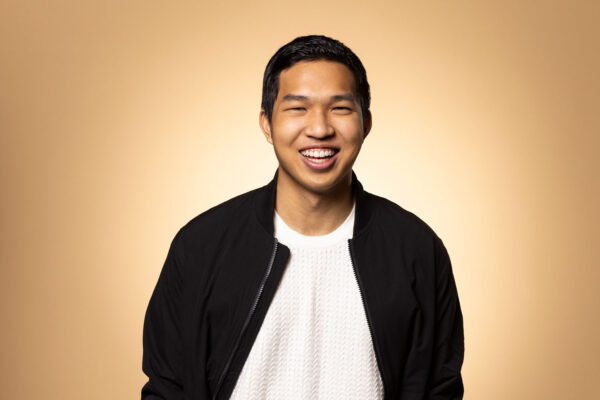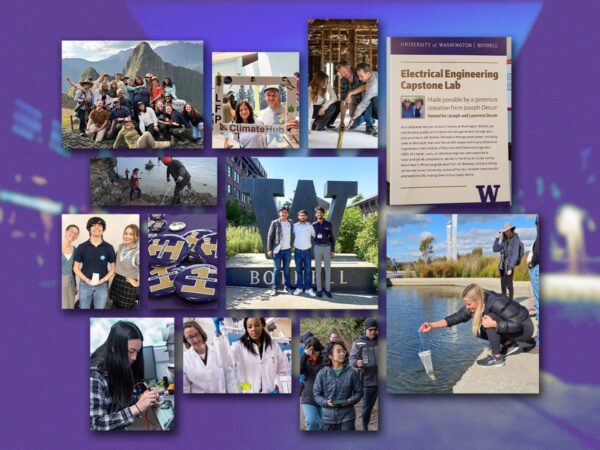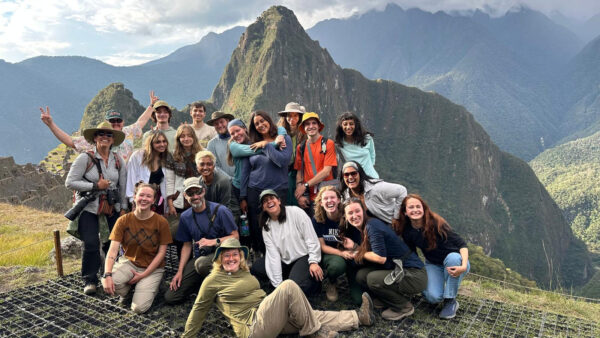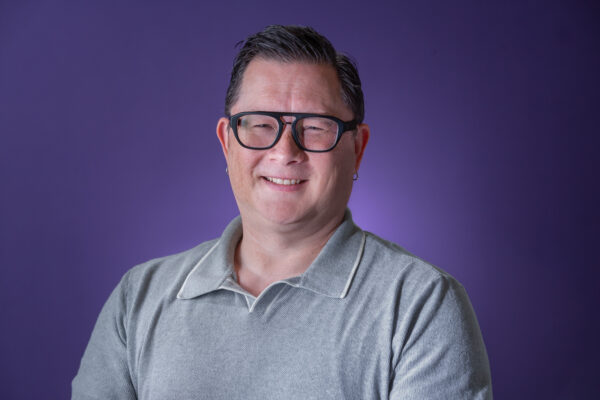Through the countless support I’ve received from classmates and faculty, one quote from my mentor Natalia Dyba, director of Global Initiatives, resonates with me the most: “One of your biggest strengths I noticed from you is your ability to connect with people.”
I want to share the most impactful experiences I had connecting with others during my time at the University of Washington Bothell.
During my first year, I interviewed an elder gardener in the High Point neighborhood in Seattle for a research project on soil contaminants led by Dr. Melanie Malone, associate professor in the School of Interdisciplinary Arts & Sciences. To my surprise, the garden was run by Cambodian families like mine that had fled the Khmer Rouge genocide. We had learned the importance of trust in community research, so I greeted the elder in Khmer — and her initial wariness disappeared. It felt magical. We connected deeply as she shared how she still uses farming methods from Cambodia, and I helped her understand how to reduce exposure to heavy metals in the soil.
This planted a seed in me about how conversing in one’s native language can help to build a real connection.
Bridging computer science and biology
At the same time, I pursued my primary field of study: computer science. Though I am traditionally not associated with being outgoing, I learned that technology, much like languages, can be a tool for bridging gaps and empowering people’s lives, whether it be through designing accessible user interfaces or amplifying people’s work.
For my capstone, under the supervision of Dr. Brent Lagesse, associate professor in the School of STEM, and in collaboration with Miller Laboratory at the University of Utah, I built machine learning powered tools for biologists to help collect critical data of cells undergoing mitosis. I noticed working on that project that biologists and programmers rarely interacted with one another, and I set out to resolve the issue.
In the summer of 2024, a new project opportunity arose when I received a Center for Biotechnology Innovation & Training undergraduate award. I worked directly with the biologists on developing a tool to find similar areas of RNA protein sequences across different species, revealing vital areas responsible for the protein’s structure and function. The goal was to improve their tedious workflow, which required more than 300 button clicks and four different websites, and took over 40 minutes to test every protein.
I designed, prototyped and developed the tool. I also took on the role of a communicator between the disciplines, regularly meeting with biologists to get feedback and transforming their workflow eventually to a single button click.
This experience deepened my passion for bridging communication gaps not just between disciplines but also across cultures and languages. This motivated me to study abroad through the “World War II Through Film in Tokyo” program. As Americans, we often only hear our side of the story, so I wanted to learn about the war from the Japanese perspective. Although speaking Japanese wasn’t required, I spent five to six hours nearly every day during the summer leading up to the program self-studying the language. When I arrived in Tokyo, I felt I could engage more deeply with the materials and connected with others on a deeper level. Initially, I aimed to just learn basic phrases, but now I am driven by the desire to express my thoughts and feelings more fully in my newly learned language.
Giving back
Upon returning, I became a Study Abroad ambassador on campus, encouraging others, especially STEM majors, to pursue similar experiences as I learned that few had done so. I presented in classes about upcoming programs and spent hours on calls with interested students.
I also welcomed visiting groups from Japan to Turkmenistan, showing them around campus and discussing what life in our country is like. One thing I always try to do is learn some basic phrases in the languages of people I know I’ll be meeting. Seeing their surprised faces and smiles when I greeted them keeps me wanting to learn more. I can now greet people in more than 10 languages!
Since freshman year, I’ve been part of TrickFire Robotics, UW Bothell’s robotics club. This past autumn, our club suddenly grew from 25 active members to four times that size! At that point, I was the sole developer for the rover’s mission control software, which I like to describe as a scaled-down version of NASA’s mission control center at Houston, with multiple views displaying the rover’s real-time status and executing commands remotely.
The developer team grew to seven members, and as I was the most experienced, I took on the role of team developer lead. Most had not been involved with robotics or were not familiar with the technologies, like my situation when I first joined. Having experiences in high school where I was often ignored or felt embarrassed for asking questions due to being inexperienced, I was determined to create a welcoming environment for everyone, regardless of their level.
I spent days transforming this small project into something maintainable and collaborative, writing beginner guides and maintaining an “open-door” policy for questions or help. Now, seeing all the members actively involved and watching their faces light up when they see their work come to life fills me with joy.
My next step
Volunteering alongside a group of Japanese students from Kanda University of International Studies visiting Seattle last year changed the course of my life. Although they were only here for a month, the bonds we formed felt lasting. Their visit pushed me to reflect on what truly matters to me, and I came to realize that I want to expand my impact on a more international scale. I’m serving as a U.S. Youth Ambassador at the American Pavilion for the Osaka World Expo this summer!
Adam Chhor is one of eight UW Bothell students selected as part of the Husky 100 Class of 2025. Every year, the University of Washington recognizes 100 undergraduate and graduate students from the Bothell, Seattle and Tacoma campuses who have made the most of their time at the UW — inside and outside the classroom.



